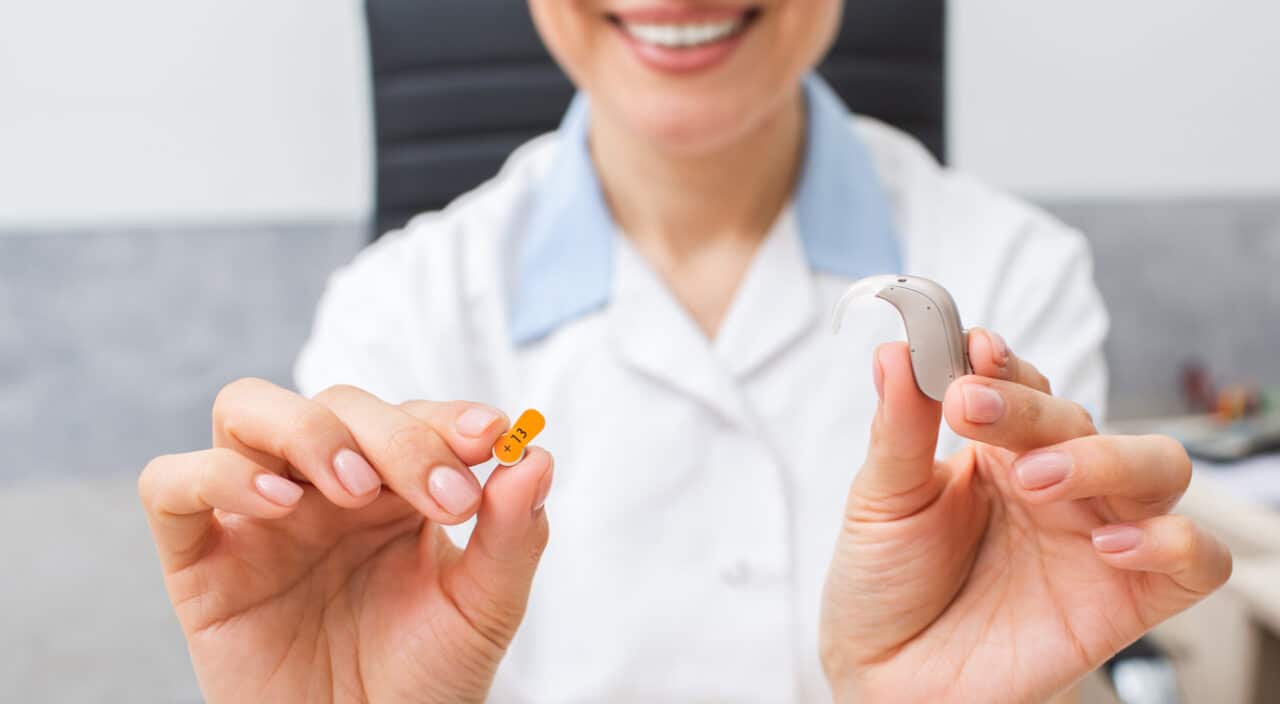Hearing aids make life for people with hearing loss so much easier. Whether they help you follow along during work meetings or to connect with your grandchildren over a stack of waffles at Jimmy’s Family Restaurant, hearing aids make it possible to hear the sounds that matter most.
This Audiology Awareness Month, we wanted to take some time to celebrate the history of this amazing device, as well as acknowledge how far hearing aid technology has come.
Brief Hearing Aid History

- The earliest hearing aids appeared in the 17th century. They were funnel-shaped devices often referred to as ear trumpets. While not particularly functional or easy to use, they represent an early attempt to improve hearing.
- In 1898, the first electric hearing aid was invented by Miller Reese Hutchinson. Inspired by the invention of the telephone, he created what was known as the Akouphone. This was a portable device that used a carbon transmitter to amplify sound.
- In 1920, a Naval engineer named Earl Hanson patented the first vacuum-tube hearing aid called the Vactuphone. The device used a telephone transmitter to convert speech into electrical signals, which were amplified through the receiver.
- The first wearable hearing aid was created in 1938 by the Aurex Corp. It consisted of an amplifier-receiver, which was clipped onto a person’s clothes with a thin wire that connected to an earpiece. They used a battery pack to power the device was attached to the hearing aid user’s clothes as well.
- In 1970, the microprocessor was created. This was a huge step into transforming hearing aids into the miniature and technologically advanced hearing aids we recognize today.
Modern Hearing Aid Technology
Modern hearing aids are far cry from their humble beginnings and do much more than amplify sounds. Many are enabled with Bluetooth® technology that can connect to your smartphone or computer and stream sounds directly into your hearing aids.
Additionally, they can be programmed to have different settings for different listening environments, providing quality listening no matter where you are. Some even come with the ability to allow your audiologist to make any needed adjustment remotely!
Hearing Aid Health Benefits
Data tells us that 7.1% of adults 45 and older used a hearing aid to treat their hearing loss. However, millions more who have hearing loss currently leave their condition untreated. Not only are they missing out on the technological advancements of hearing aids, but on the potential health benefits as well.
People who use hearing aids to treat their hearing loss experience:
- Lower levels of anxiety and depression
- Better balance and physical health
- Reduced risk of cognitive decline and dementia that can come with untreated hearing loss
Whether you are ready to try hearing aids for the first time or would like to upgrade to a newer model, call the experts at Elevate Audiology today and schedule an appointment.
